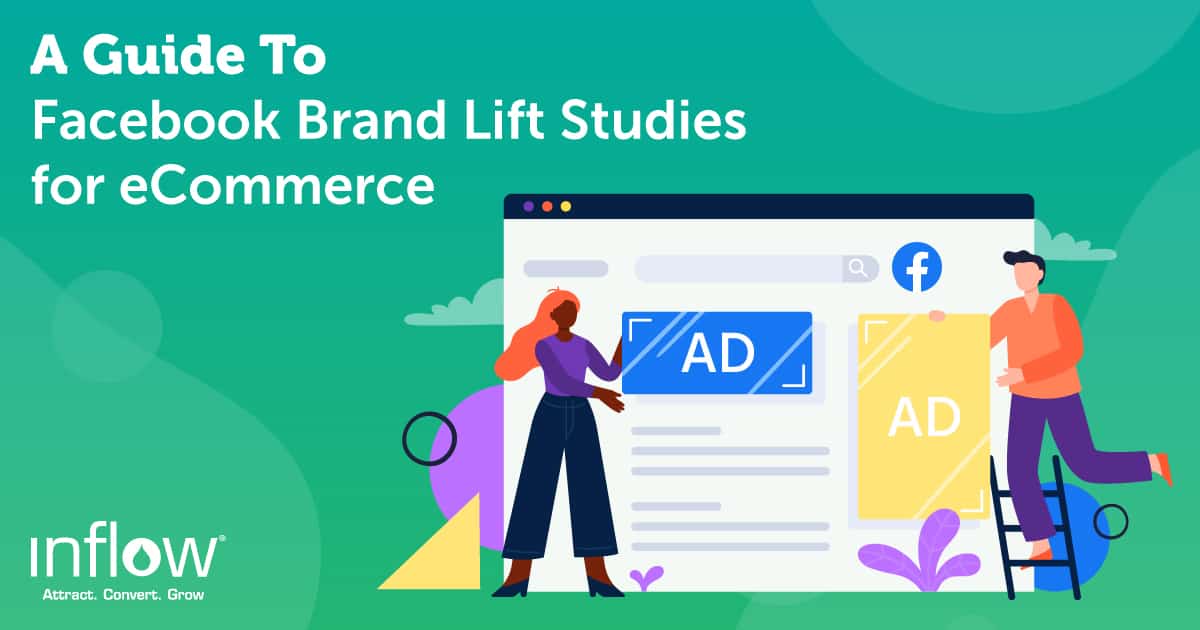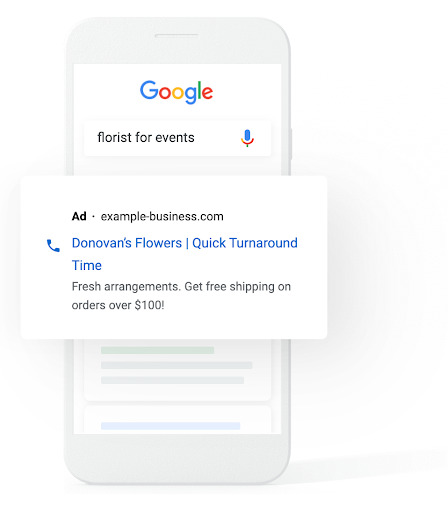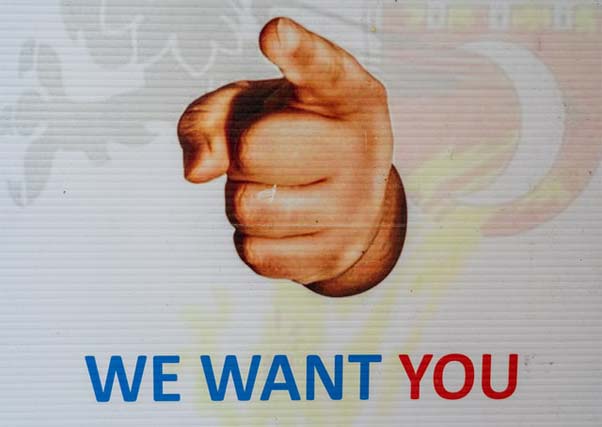
Social media has become a big player in the world of PPC advertising. However, when you’re a paid social marketer, it can be challenging to quantify your campaign results into overall business outcomes.
Unfortunately, an impression (or even a click) is not an assurance of brand awareness. People can click ads or visit the landing page — but forget the brand after they close the window.
So, how can you quantify the effect advertising is having on how people remember and perceive your brand? Furthermore, how can we, as paid social marketers, communicate to our clients that our ad campaigns are driving brand awareness?
Facebook gave us an answer: the Facebook Brand Lift Study.
What is a Facebook Brand Lift Study?
Facebook Brand Lift Studies (also known as Brand Lift Tests) allow advertisers to measure brand awareness and favorability with a statistical degree of reliability. By serving up questions to a select audience, a brand lift test shows you exactly how effective your awareness campaigns have been — including whether it’s time to step up your game.
Facebook’s tests allow paid social marketers to conduct randomized control trials (RCT) to test for incremental lift. Unlike traditional A/B tests (which allow for testing one variable against another), RCT testing allows us to deduce an actual lift in results and the effectiveness of campaigns overall.
Running a Facebook Brand Lift Study can help answer questions your eCommerce business has difficulty quantifying, from “How well does my target audience remember my brand?” to “How do people feel about my brand?” These insights are invaluable not only for paid advertising but also for your company overall.
No more hoping and guessing — just real numbers and results. It’s a paid social advertiser’s dream (with a few caveats, but more on that later).
How to Measure Your Brand Lift on Facebook
So, how does a Facebook Brand Lift Study work?
If you want to run a brand lift test, the first thing you’ll need to do is contact your Facebook representative. While the test is free to create, there may be campaign budget requirements to get it all started.
Like with any good test methodology, a Facebook Brand Lift Study involves two groups: test and control. Your chosen audience is randomly divided into these two groups to ensure that the results of the test aren’t skewed from outside factors. Ads are delivered to the test group, and then both the test and control groups are served with a short, one-question poll. Each poll consists of a question and a selection of multiple-choice answers.
You can choose from a variety of questions, depending on what metric you’re most interested in. A few examples:
- “Have you seen (your brand)’s new product line?” (Answers: Yes, No)
- “Which of the following brands have you heard of?” (Answers: Competitor 1, your brand, Competitor 2, Competitor 3)
- “What is your opinion of (your brand)?” (Answers: “I like it”, “I neither like nor dislike it”, “I dislike it”, or “I am not familiar with this brand”)
Facebook calculates the brand lift percentage by comparing the results of the test and control groups. (You can also choose to measure conversion lift during this test if you’re already tracking conversions through your campaigns.)
Look at the difference in the percentage of people who gave the desired response in the test group and the control group, and you’ll see the direct effect of your campaign. You’ll then want to compare this brand lift to average results within your vertical or industry to ensure the most accurate comparison.
(It’s important to run this test for at least 14 days to give it a sufficient time period to gather insights. After the threshold of 100 responses has been collected, you will begin to see near real-time incrementality reporting in your Facebook Ads Manager.)
Using Your Test Results to Optimize Your Campaigns
Once you have the results from your test, use this information to take your digital marketing efforts to the next level. Use your data either as an indicator that your PPC strategy is getting the right results or, if the results aren’t what you hoped for, as a sign that it’s time to course-correct!
Asking specific brand lift questions can help you investigate exactly which part of your campaign is failing to resonate with your audience. Then, you can test a new strategy, running your test later to see how your levels may have changed.
Here are two examples:
1. Evaluating a Product Rollout
Let’s say your company has just launched a new product line. In an effort to gain brand recognition, you launch a Facebook Reach campaign.
Ads Manager tells you that your campaign was seen by 200,000 people. However, when your brand lift study asks your audience “Have you seen (your brand)’s new product line?”, there’s no statistically significant difference between your test and control group.
This is a big red flag — and a sign that it could be time to change your ad creative.
Your potential next steps: testing new imagery and ad copy.
2. Reevaluating Your Marketing Funnel
Your company has been running an extensive ad campaign focused on generating transactions. However, when your brand lift study asks “Will you buy from (your brand) the next time you go shopping for (your product)?”, there is no statistically significant difference between your test and control group.
There are many potential causes to investigate here, but your first step might be to examine the marketing funnel you used for this ad campaign. People from a cold audience (those who are unfamiliar with your brand) are less likely to respond well to lower-funnel calls-to-action, like making transactions.
Consider creating a full-funnel approach (like Inflow’s “See, Think, Do” strategy). Start with brand awareness and move down the funnel, generating engagement at every step. By the time the customer is presented with the option to buy, they are familiar with your product and more likely to convert.
Pros and Cons of Facebook Brand Lift Studies for eCommerce Sites
While helpful, Facebook Brand Lift Tests aren’t ideal for every business and campaign. Before you start running tests, consider the following pros and cons.
Pros:
Facebook Brand Lift studies provide statistically significant information on how your paid social campaigns are impacting your business directly. Individual campaign performance is great, but these brand lift studies show how those campaigns are (or aren’t) raising your brand awareness.
You can get answers to specific, big-picture questions — “Do people recognize my brand?” — and tactical questions — “How well do my ads resonate with my customers?” In short, you can understand your digital brand equity in a much clearer and concise way.
Cons:
There’s one clear disadvantage to running a Facebook Brand Lift Test, and it’s the reason why our strategists hesitate to implement them for our clients.
To run a clean study, all other Facebook campaigns must be turned off during the test duration.
It makes sense: Any other form of paid advertising could be shown to your control group during the test, contaminating your results. But, with Facebook’s recommendations to run the test for at least 14 days, pausing your other campaigns for that long risks a huge loss.
Turning off your current campaigns (especially those that are performing well) creates an opportunity cost, losing any sales that would have been generated during that time period.
In addition, pausing your campaigns disrupts the Facebook algorithm. When you decide to restart your campaigns, they will reset back to “learning” phase. You likely won’t see the same performance as you did pre-pause, and it may take some time to get back to those levels.
Should You Run a Facebook Brand Lift Study?
Ultimately, you’ll need to evaluate a few things before you decide to run a Facebook Brand Lift Test:
- Your expertise with Facebook advertising
- Your current campaigns and their performance
- The cost ratio of pausing campaigns for brand lift insights
If you’re new to Facebook advertising:
If you or your client are unsure about the effectiveness of Facebook advertising (either because you’ve never used it or have attempted only a few campaigns), give a Facebook Brand Lift Test a shot. It can be a great way to test the waters, and you can use your results as proof of concept to justify the monetary investment of more extensive advertising campaigns.
If you’re currently running Facebook ads, but are unsure of the value of your results:
Not sure you or your client are getting the value needed from Facebook advertising? A brand lift study could give the results you’re looking for.
Remember, the biggest downside here is that you will lose campaign data and potential revenue for the test’s duration. However, the information gained could be quite valuable for both the campaign (Are people responding to your current ad copy and creative?) and your overall marketing strategy (Is there a different marketing platform that would provide you a better return?).
If you’re a seasoned paid social veteran or Facebook guru:
Since you’ve been running campaigns for a while, you probably already know the answer here.
The results of a Facebook Brand Lift Study might not be worth the loss of the campaign data, especially if you have proper UTM tagging and properly set multiple-attribution. You’re likely better off continuing your campaigns as-is and exploring other options for analyzing your brand awareness lift.
Conclusion
We won’t deny the usefulness of Facebook Brand Lift Studies, especially for those who are new to the Facebook advertising space. Such clear evidence of brand awareness lift is difficult to come by. But the potential disadvantages of lost revenue and campaign data can be too risky for many.
In our experience, brand lift tests are just one way to capture and analyze performance data. Depending on your situation, there can be less disruptive methods to gain performance insights, such as:
- Proper UTM tagging: UTM tags will allow you to see Facebook campaign data and compare it across platforms and sites in Google Analytics.
- “Social proof”: Monitor the engagement (likes, shares, comments) on your ads. If people are engaging with your ads, it’s an indication that your audience and creative is properly aligned.
- CPM and CTR: A low CPM (cost per 1,000 impressions) and a high CTR (click-through rate) are both good indicators of ad copy and creative that is engaging to your chosen audience.
If you’re unsure of whether Facebook Brand Lift Studies are right for your campaigns, or you want to improve your paid social campaigns in other ways, our strategists are always happy to chat. Contact our team anytime to request a free, customized proposal for your paid social needs.






